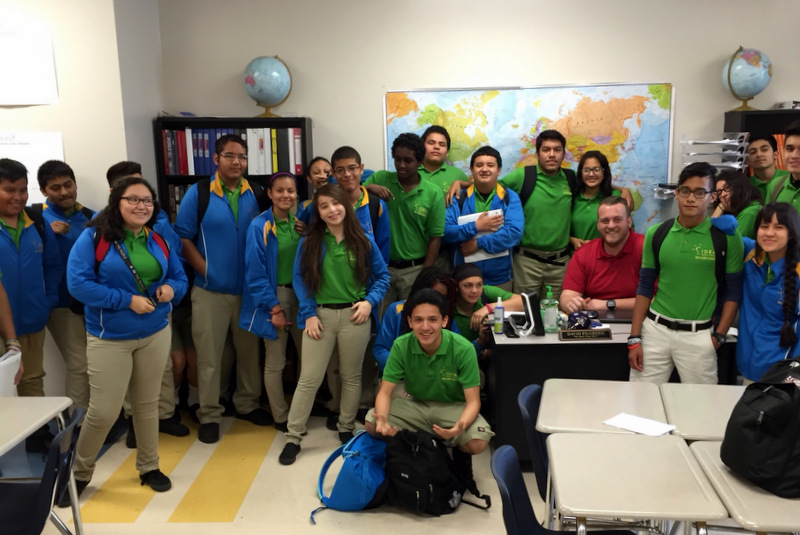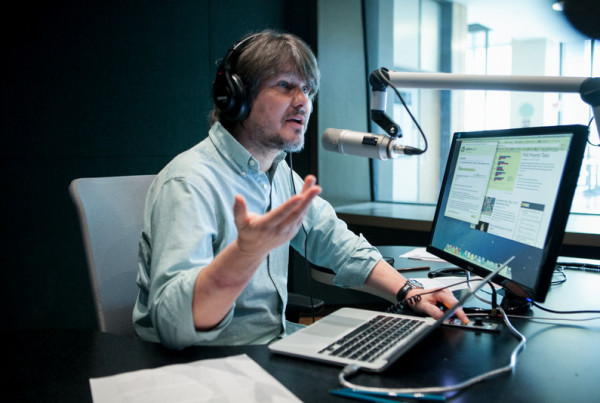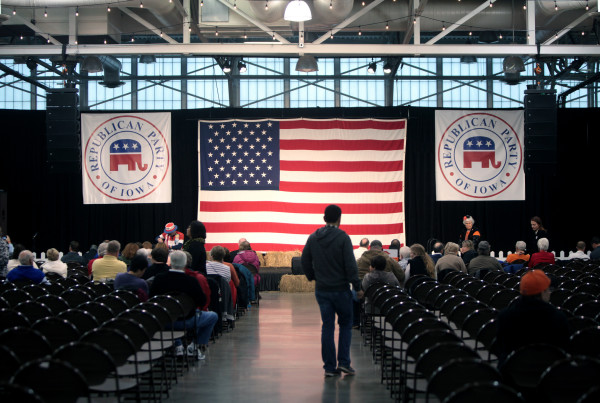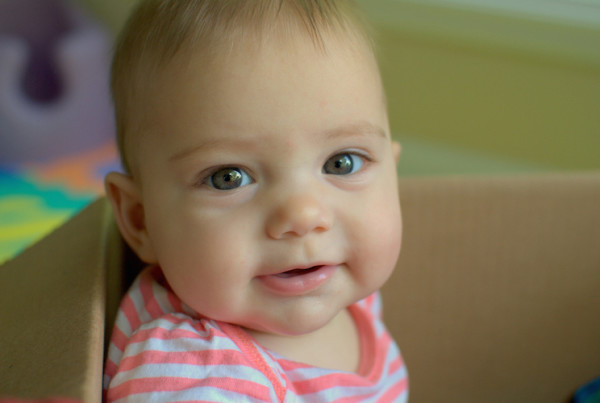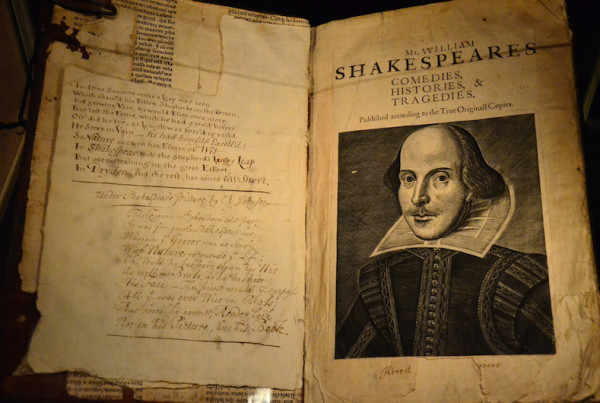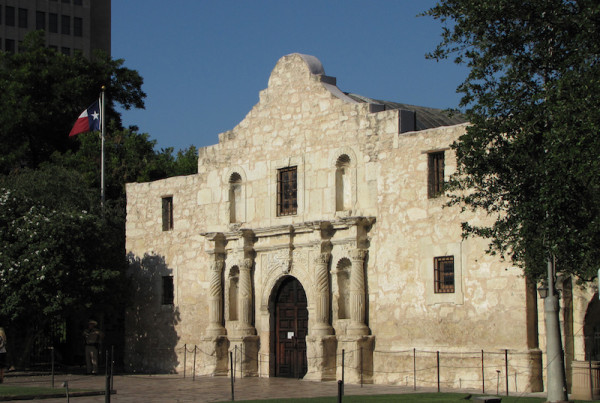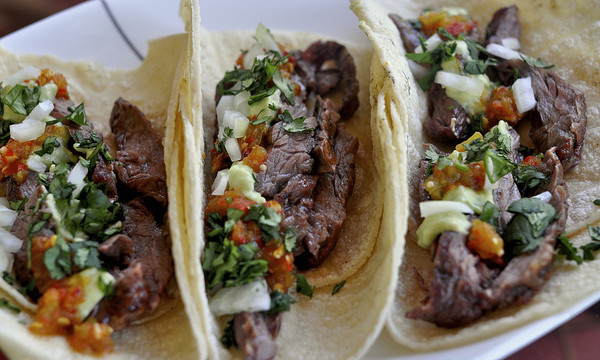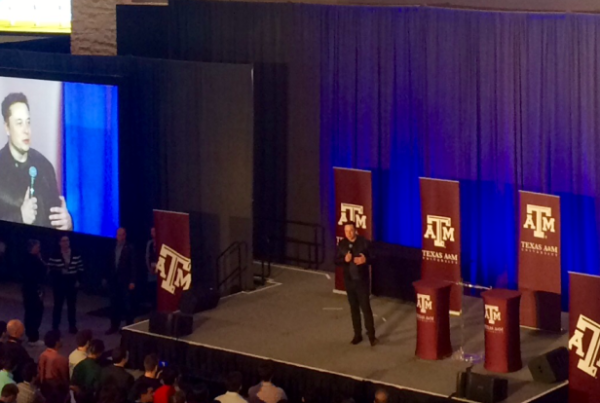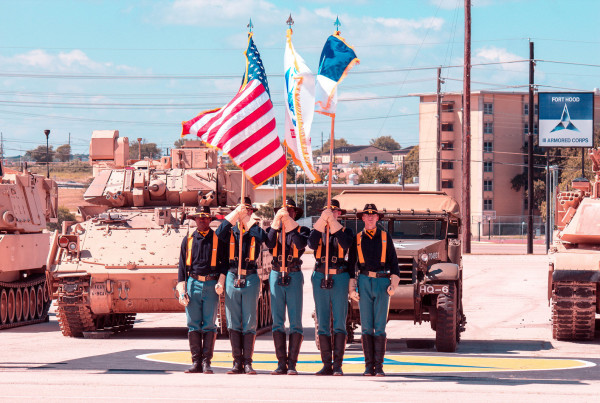The company that prints new voter registration cards is probably busy this time of year. There are tons of new eligible voters in 2016. Data from the 2010 Census tells us 7 million Texans were under 18 six years ago. Many of those people are now eligible to vote this time around.
There’s another group of newly eligible voters: new Americans, 19 million people who weren’t born in this country but have become citizens. I’m in that category.
I do have a lot in common with people who were born, educated and, in my case, married in another country. We are Americans. New Americans know elections here are very different than in other countries. Take tonight’s caucus in Iowa. So much talked about, so critical to candidates, and yet so – foreign.
So, is a caucus like a primary? In a primary, I can just walk into a booth and pull a lever, spin a dial, or push a button and I’m done. So, how does “caucusing” work? I went back to school to learn more.
David Pilgreen is teaching a classroom of 14- and 15-year-olds about caucusing. He’s at a charter school called IDEA Allan in Austin. The overwhelming majority of kids at this school have parents who were not born in the U.S.
“So, if you are on this side, go stand over there. You will be Republicans and over there you will be Democrats,” Pilgreen says. His class has 10 seconds to caucus.
The Republican caucus takes place in no time.
Caucuses work like this: candidates spend a lot of time convincing voters to join their team.
In this class, there were a few short speeches on the Republican side:
“I’m Donald Trump and I’m running for president. Let’s build a wall!”
“I’m Ben Carson – no more bureaucrats!”
“I’m Ted Cruz – the Constitution says…”
And then, people pick a candidate. Candidates who don’t get 15 percent of the vote are disqualified, and that is that.
But there are a few more steps on the Democratic caucus side of the room.
“So, if you would like Hillary Clinton, I’d like you to stand by Hillary, if you would like Bernie Sanders, I’d like you to stand by Bernie and if you would like Martin O’Malley, I’d like you to stand by them. OK Democrats – go find your candidate,” Pilgreen says.
Everything is very civilized, until Martin O’Malley pulls in a single vote. That means that he isn’t a viable candidate, so his vote is up for grabs. That’s when kids from the Clinton and Sanders camp go wild trying to convince that one O’Malley voter to join their ranks.
“Would you rather be broke or dead – vote for Hillary!”
“Feel the Bern – Bernie!”
By the end of this caucusing class, Bernie Sanders has won the most Democratic votes. Hillary Clinton has enough to stay in the race. Over on the Republican side of the room, the junior senator from Texas, Ted Cruz, gets the most votes. There was some party business to take care of, and that is that.
But why should a 14-year-old Texas student care about what’s going on in Iowa today?
“It matters because most of our parents probably don’t even know English, but they work here so that children like us can grow up to have good jobs, a good life and just be happy in general,” Jyali Barrera says. “So it’s really important to vote for the right person. It’s really important to know what you are supposed to do instead of going there blindly.”
Barrera, part of the AMBLI class, won’t be able to vote this year. But come 2020 – she will be able to. As another kid in the class says, we may end up going to college in Iowa. It’s better to know what caucusing means, than not.


